What are Second Charge Mortgages?
Second charge mortgages, also known as secured loans, are a type of borrowing that allows homeowners to unlock the equity in their property without altering their existing mortgage terms. These loans are secured against the property and rank behind the first mortgage in priority. While they can be a helpful financial tool for purposes like home renovations or debt consolidation, they often come with higher interest rates and additional fees due to the increased risk for lenders.
Unfortunately, some second charge mortgages have been mis-sold in the UK, leaving borrowers struggling with repayments that far exceed their affordability. This issue arises when lenders fail to adequately assess the borrower’s financial situation or impose terms that make repayment unmanageable, trapping customers in long-term financial distress.
In this blog, we look at some examples involving second charge mortgage lenders such as Evolution, Tandem and Pepper Money. All Ombudsman rulings cited in this blog are from 2024 or 2025. Remember that ‘second charge mortgages’ and ‘secured loans’ are effectively the same thing. There is a Glossary at the end of this blog to help with the technical terms.
If you think you’ve been affected by irresponsible lending, you may be able to claim compensation with Allegiant’s reclaim service:
Apply Now
We’ve seen examples of the UK Ombudsman ordering lenders to compensate customers when the secured loan was never going to be affordable:
“I uphold this complaint about the lending decision. I don’t think, acting fairly, that Evolution ought to have lent to Mr and Mrs Z. To put things right, it should refund all the interest and fees they paid while the loan was outstanding”[1]
The importance of bank statements
Someone’s bank statements tell the story of their financial circumstances – how much they earn, how much they spend, and how much they have left over at the end of each month (sometimes called ‘disposable income’).
You might assume that when being given a large secured loan, the lender would be thoroughly checking your bank statements to make sure you could afford the new borrowing, but we’ve seen shocking examples of expenditure on bank statements being ignored.
Some lenders rely on government statistics about what the average person spends, rather than delving deep into the bank statements to see that specific customer’s actual spending (possibly so the lender saves themselves valuable time making their lending decision). But the result can be inaccurate assessments of the money a customer has available to pay back a second charge mortgage. An Ombudsman explained:
“Tandem has said it used government guidelines for basic household essentials and living costs, which it is entitled to do. But I’m satisfied Tandem had evidence that those costs were much higher for Mr M and Miss M each month than it had recorded. In total it recorded £410 per month for shopping, clothes, and socialising. Even just looking at the most recent bank statements Tandem had showed the amount Mr M and Miss M were spending on those things was actually more than double that amount”[2]
Indebtedness and Debt consolidation
According to a July 2024 YouGov survey, 30% of people would consider using a second charge mortgage to consolidate other debts[3].
People with existing debts are likely to have a low disposable income. Naturally, if you had a good amount of money left in your bank account just before your next wages come in, you wouldn’t need to borrow money and you wouldn’t have debts. The industry regulator, the Financial Conduct Authority, highlighted back in 2018 that some second charge mortgage lenders were not getting to grips with these facts:
“…it doesn’t appear logical that a customer who has large volumes of unsecured debts should have a large disposable income… We found that firms are not always using realistic assumptions, a practice that was particularly evident when customers were consolidating a number of debts, for example consolidating credit card accounts and overdrafts which were consistently near to or at their limit”[4]
For customers with existing debts, there is a risk that a second charge mortgage will not be affordable over the long term because the customer simply lacks the disposable income to afford the monthly repayment of the second charge mortgage. Bear in mind that it’s not unusual for a monthly repayment on a second charge mortgage to be over £400 per month[5] – a lot of money to repay consistently every month, when there’s also the main mortgage to pay as well as all other living expenses and commitments. It’s also not unusual for a second charge mortgage to have a term of around 15 years[6]: a long time to maintain payments on borrowing which is not your main mortgage.
Whilst a large secured loan could help consolidate debts for some customers, there is a risk that the customer is still left in a tricky financial position:
“Although this loan reduced Mr and Mrs Z’s outgoings, because it consolidated two personal loans, it didn’t in my view reduce them enough to make this borrowing affordable. Even after consolidation, Mr and Mrs Z still had substantial unsecured debt – including several credit cards at or near large credit limits, and an overdraft”[7]
Imagine if you have used credit cards and overdrafts in the past; you then enter into a second charge mortgage agreement over a 15 year term. How likely do you think it is that you won’t take out any new credit cards or overdrafts during that 15 year term? Whilst lenders aren’t expected to predict the future, a responsible lender ought to be considering this:
“Pepper is assuming that Miss P would not replace this unsecured debt with another in the same timeframe. And while I agree it could not be expected to know what Miss P would or would not do in the future and her actions in this regard are not within its control, the evidence it did have is that Miss P has consistently been reliant on high-cost debt to fund day-to-day essentials… I am not persuaded it would have been a reasonable or safe assumption that Miss P’s debt position would only decrease during the term of this loan”[8]
Credit reports
Like bank statements, credit reports tell a story about a person’s financial situation. The advantage that credit reports have over the bank statements is they can show details about missed payments, credit limits and amounts of debt over the past six or more years.
Whilst almost a third of people cannot read and understand a credit report[9], reviewing credit reports is bread and butter to professional lenders of second charge mortgages.
Credit reports can show a second charge mortgage lender that a customer is repeating a harmful pattern of consolidating debts, and then taking out new credit, which then creates new debts:
“Mrs S and Mr S’ credit report showed a history of taking out loans and credit cards, and then consolidating them, before repeating the pattern. It showed they’d taken out a second charge secured loan in April 2019, which from the dates of other debts being settled appeared to be for debt consolidation purposes. They then took out a further second charge secured loan less than a year later in February 2020, which repaid the April 2019 secured loan plus other unsecured debts. Since then Mrs S and Mr S had taken on further unsecured debts, including a hire purchase agreement, various credit cards and budget accounts and three unsecured loans.”[10]
A responsible lender ought to see the circumstances where, offering a second charge loan to consolidate debts, places a customer in a worse position – rather than a better position – because the customer is still stuck with a lot of debt to repay.
If any of this sounds like your experience of taking out a secured loan with a second charge mortgage lender, you may be able to claim compensation for irresponsible lending and mis-selling, with Allegiant’s reclaim service:
Apply Now
Glossary
Below is an explanation of some of the words and phrases used in this blog. You can find a more general glossary at: https://allegiant.co.uk/glossary/
Second Charge Mortgage – A loan secured against your home when you already have a mortgage. It’s paid back after your main mortgage if you sell or fall behind on payments.
Equity – The amount of your home you actually own—the difference between its value and what you still owe on your mortgage.
Secured Loan – A loan where you use an asset (like your home) as security. If you can’t repay, the lender can take the asset.
Unsecured Debts – Debts that aren’t tied to a specific asset, like debts from credit cards or personal loans. If you can’t pay, the lender can’t take your property, but they can still take other actions to recover the debt.
Disposable Income – The money you have left each month after paying bills and debts—used to check if you can afford a loan.
Irresponsible Lending – When a lender gives you a loan without properly checking if you can afford the repayments.
Financial Conduct Authority (FCA) – The UK watchdog that makes sure lenders treat customers fairly and follow the rules.
Financial Ombudsman Service – An independent service that helps settle complaints between customers and banks or lenders.
Debt Consolidation – Combining multiple debts (like credit cards or loans) into one single loan, often to reduce payments.
Credit Report – A record of your borrowing history, including loans, credit cards, and whether you’ve made payments on time.
Affordability Assessment – A check lenders do to see if you can realistically repay a loan based on your income and spending.

[1] https://www.financial-ombudsman.org.uk/decision/DRN-5274948.pdf
[2] https://www.financial-ombudsman.org.uk/decision/DRN-5114113.pdf
[3] https://www.pepper.money/file/Specialist-Lending-Study-2024.pdf
[4] https://www.fca.org.uk/publication/correspondence/dear-ceo-letter-second-charge-lenders.pdf
[5] “For a typical loan of £26,600 over 180 months with a variable interest rate of 19.56% per annum, your monthly repayments would be £484” (https://www.evolutionmoney.co.uk/help-and-advice/ways-to-borrow/second-charge-loans-explained-advice)
[6] Ibid. 180 months = 15 years
[7] https://www.financial-ombudsman.org.uk/decision/DRN-5274951.pdf
[8] https://www.financial-ombudsman.org.uk/decision/DRN-4857185.pdf
[9] For the following question, by ‘credit report’, we mean a record of a borrower’s credit history from a number of sources, including banks, credit card companies, collection agencies and governments…Do you know how to read and understand a credit report? DON’T UNDERSTAND = 32% (https://www.pepper.money/file/Specialist-Lending-Study-2024.pdf)
[10] https://www.financial-ombudsman.org.uk/decision/DRN-4876484.pdf








